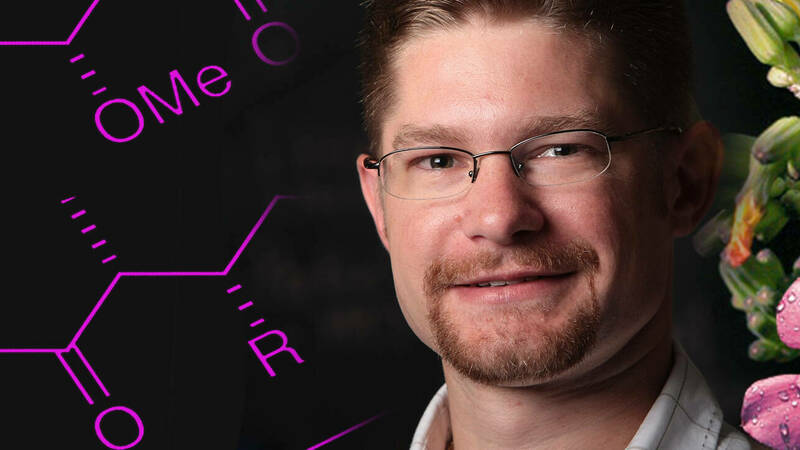
Brandon Ashfeld
Professor
- Office
- 305D Mccourtney Hall
Notre Dame, IN 46556 - Phone
- +1 574-631-1727
- bashfeld@nd.edu
Research Areas
- Organic Chemistry
Research Specialties
- Energy
- Medicine
- Synthesis
Prospective Graduate Students
Biography
| Year | Title |
|---|---|
| 2022-present | Professor, University of Notre Dame |
| 2014-2022 | Associate Professor, University of Notre Dame |
| 2016-2020 | Director of Graduate Studies, University of Notre Dame |
| 2007-2014 | Assistant Professor, University of Notre Dame |
| 2004-2007 | Ruth L. Kirschstein NIH Postdoctoral Fellow, Stanford University |
| 2004 | Ph.D. in Chemistry, University of Texas at Austin |
| 1998 | B.S. in Chemistry, University of Minnesota-Twin Cities |
Selected Awards
2015 Rev. Edmund P. Joyce, C.S.C. Award for Excellence in Undergraduate Teaching
2011 NSF CAREER Award
2009 University of Notre Dame Faculty Scholarship Award
Research Interests
Our research program is focused on the development of new methods to enable unconventional bond formations in the synthesis of complex natural products and designed materials. Our main objective is to use new chemical constructs to design and synthesize improved chemotherapies for brain and CNS cancers, and materials that will ultimately lead to the reduction of atmospheric concentrations of anthropogenic CO2.
Designing Brain and CNS Cancer Chemotherapeutics.
We seek to addresses the issue of suitable brain and CNS drug treatment options by focusing on natural products with promising cytotoxicity that also display blood brain barrier (BBB) transcytosis properties. Specifically, the families of diarylheptanoids and glycosidic marine toxin natural products have captured our attention due to the potent anticancer activity exhibited by multiple members of each class. We are currently working toward the development of two new synthetic methods that will enable the efficient, and scalable construction of these natural products for the development of new CNS cancer chemotherapeutics. The first approach is based on the conceptual design of a tandem reaction sequence composed of mechanistically distinct transformations facilitated by a single catalyst to rapidly assemble all alkyl-substituted tertiary carbons centers. By exploiting aldehydes as traceless dielectrophilic entities, in conjunction with the bifunctional attributes of titanocene, we can construct multiple C–C and C–X bonds in a highly convergent fragment coupling. Our second area of methods development focuses on the formation of Csp2–N and Csp2–C bonds, which constitutes one of the most vibrant areas of research in synthetic organic chemistry today. Unfortunately, conventional multistep protocols involving organometallic reagents and transition metal complexes can complicate complex molecule synthesis. Our program is working toward providing a solution to this long-standing problem in organic synthesis through the development phosphorus-mediated C–C and C–N bond formations that ultimately circumvents the need for traditional organometallic or transition metal-based reagents.
Innovating the Chemistry of Covalent Carbon Capture.
Managing the impact of human activities on the concentration of CO2 in the atmosphere is the most far-reaching environmental challenge facing the world today. Carbon capture and separation is an integral part of our energy future, independent of its application to todayâs coal-fired power plants. Our research program is working toward the development of a strategy to control atmospheric, anthropogenic CO2 concentrations through the design of energy efficient carbon capture and sequestration materials. Our ultimate goal is the development of a regenerative material that will undergo selective super-stoichiometric carbon capture with near-zero parasitic energy consumption. Recognizing that C–C and C–X chemical bonds are convenient media for energy storage, transport, and consumption, our efforts rely on the design and synthesis of functionalized N-heterocyclic anions and carbenes for energy efficient gas phase removal of CO2.
Selected Publications
- Bacher, E. P.; Twiringiyimana, R.; Rodriguez, K. X.; Wilson, R. A.; Bodnar, A. K.; O'Connell, R.; Toni, T. A.; Eckert, K. E.; Wiest, O. and Ashfeld, B. L. "A Proline-Squaraine Ligand Framework (Pro-SqEB) for Stereoselective Rhodium(II)-Catalyzed Cyclopropanations" 2023 Organic Letters, 25 (45), pp.8156-8161. DOI: 10.1021/acs.orglett.3c03344.
- Felton, D. E.; Kohlgruber, T. A.; Tucker, Z. D.; Gulotty, E. M.; Ashfeld, B. L. and Burns, P. C. "Utilizing Ionic Liquids as Bifunctional Reagents for the Ionothermal Synthesis of Uranyl Compounds" 2023 Crystal Growth & Design, 23 (11), pp.8311-8318. DOI: 10.1021/acs.cgd.3c00976.
- Zhu, Y. N.; Zhao, Y.; Wen, J. L.; Liu, S.; Huang, T. H.; Hatial, I.; Peng, X. X.; Al Janabi, H.; Huang, G.; Mittlesteadt, J.; Cheng, M.; Bhardwaj, A.; Ashfeld, B. L.; Kao, K. R.; Maeda, D. Y.; Dai, X.; Wiest, O.; Blagg, B.; Lu, X. M.; Cheng, L.; Wan, J. and Lu, X. "Targeting the Chromatin Effector Pygo2 Promotes Cytotoxic T Cell Responses and Overcomes Immunotherapy Resistance in Prostate Cancer" 2023 Science Immunology, 8 (81), eade4656. DOI: 10.1126/sciimmunol.ade4656.
- Hammers, D. E.; Donahue, D. L.; Tucker, Z. D.; Ashfeld, B. L.; Ploplis, V. A.; Castellino, F. J. and Lee, S. W. "Streptolysin S Targets the Sodium-Bicarbonate Cotransporter NBCn1 to Induce Inflammation and Cytotoxicity in Human Keratinocytes during Group A Streptococcal Infection" 2022 Frontiers in Cellular and Infection Microbiology, 12, 1002230. DOI: 10.3389/fcimb.2022.1002230.
- Chinthapally, K.; Blagg, B. and Ashfeld, B. L. "Syntheses of Symmetrical and Unsymmetrical Lysobisphosphatidic Acid Derivatives" 2022 Journal of Organic Chemistry, 87 (15), pp.10523-10530. DOI: 10.1021/acs.joc.2c0117610523J.
- Nannapaneni, D. T.; Chinthapally, K.; Hatial, I.; Ashfeld, B. L. and Blagg, B. "A Succinct Synthesis of (25R)-Cholesta-5,7-Diene-36,26-Diol from Ergosterol" 2022 Tetrahedron Letters, 103, 153974. DOI: 10.1016/j.tetlet.2022.153974.